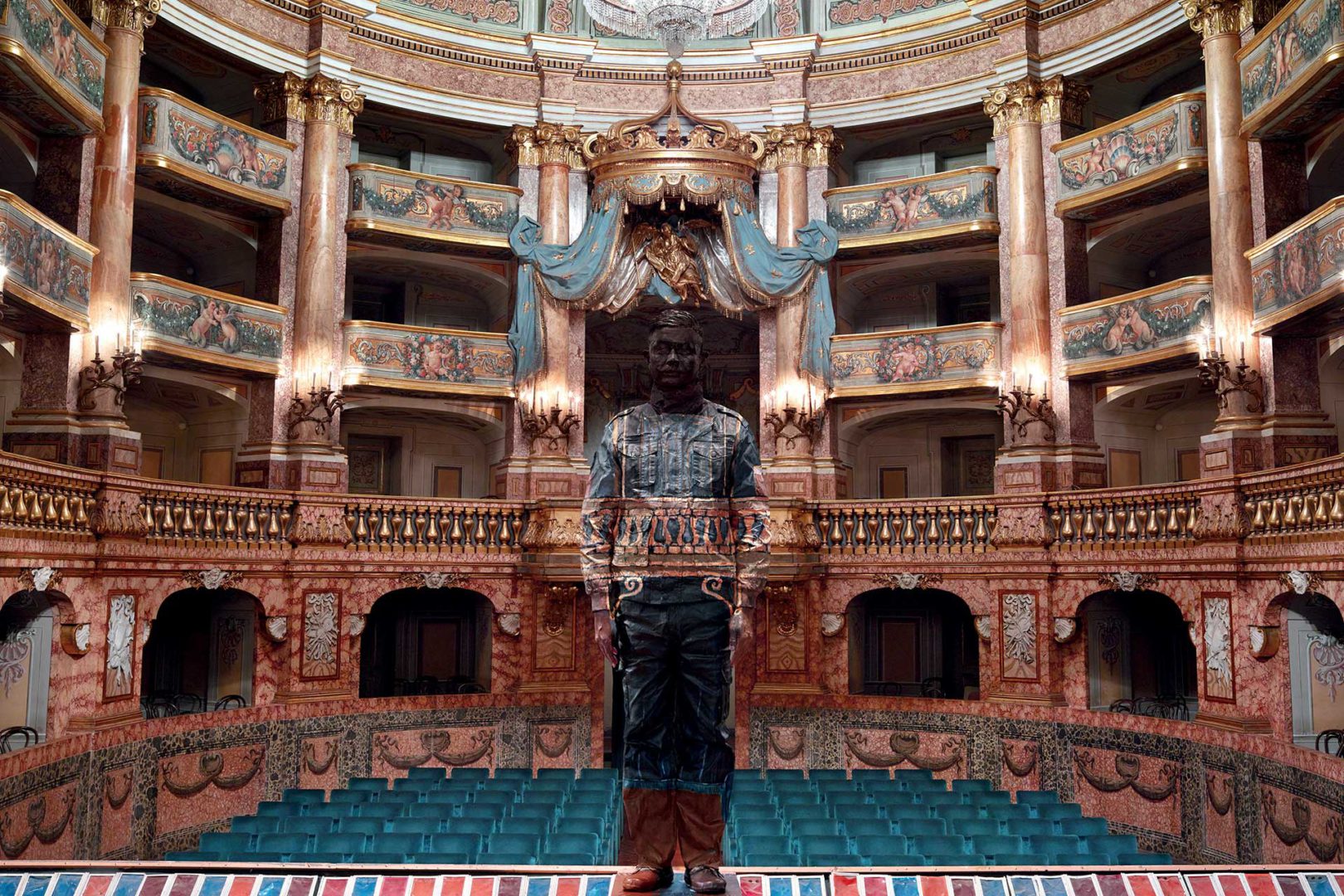«The chameleon changes colour to conform to the background as a form of self-protection. Humans are not animals because they cannot protect themselves»
An invisible man posing – he puts his own body between the camera and the landscape. Painting his own skin and clothes, Bolin dissolves into the surrounding area, himself becoming a part of the environment that contains him. Camouflaged like a chameleon. «I hired a real hacker to hide me among the pages. You can even see my work on the government website. To connect what I do to our times».
A dialogue before a backdrop of reality: walls, monuments, architectures, political slogans, phone booths… A rhetoric of cultural and national identity that is like an albatross for the individual. Standing on, being a part of, painting reality onto one’s body like a canvas that is not strictly white. «The most important material on my body is the military uniform. At first I imitated the disguise of a sniper». A political artist? Almost. His objective remains that of expressing the relationship between civilisation and human beings. «I’m confused. When I do more it feels like I know less».

Political and social reality is an area of interest for Liu Bolin, who has created a sentimental portrayal of it. Bolin’s intention is not to disappear, but to survive. Today camouflage is not used to hide, but is rather a strategy for acquiring visibility. A stress for modern culture. «The creation of art must reflect our times. We must express the angst of our present with the art of the things around us». The problems of social development are everywhere: war, financial crisis, food safety, and air pollution threaten the future of every human being. «I want to preserve the current status on these topics». This is the same concept behind his Social Sculptures.
The challenges that a modern Chinese artist must face are many, beginning with the symbolic system of his own country. Bolin is a multidisciplinary artist – his first series was photographic, but he also uses painting, photography, sculpture, and performance. Technology is only a tool. The work of the artist is choosing what is appropriate. «The relationship between an artist and the world is similar to that which exists between an old Chinese doctor and the community. He knows at a glance where the illness lies». The series Hiding in the City, began in China, was then reproduced in many locations around the world – leading not only to collaborations, but also daring marketing campaigns. «Moncler made one of my dreams come true: to work on the ice of the Arctic. It was like returning to the origins of man». Born in 1973 in the northern province of Shandong and coming of age when China had finally risen from the ashes of the Cultural Revolution and began to experience a relatively stable political situation, Bolin is known for his series of photographs in which he explores the man-nature-political power relationship: Hiding in the City. He lives and works in Beijing. His first solo show was in Beijing in 1998. His shows have been presented at many other locations worldwide amongst which Les Recontres d’Arles, the Fondazione Forma in Milan, the Fotografiska Museet in Stockholm, H. C. Andersen Museum in Rome and the First Performance Biennial in Argentina directed by Marina Abramovic.
IMAGE GALLERYLiu Bolin was born in 1973 in Shandong, China and studied sculpture at the Central Academy of Fine Arts in Beijing, graduating with an MFA in 2001. Better known as The Invisible Man in media circles. He discusses the social concerns of his home country through his artistic practice, most prominently through his ‘camouflage’ installations. Traversing mediums such as performance, photography, Liu Bolin dissects the tense relationship between the individual and society by ‘disappearing’ into environments which are sites of contention and criticism. His “Hiding in the City” series has been displayed in numerous museums and institutions across the globe. His artistic commitment began in the 1990s as China was recovering from the devastating effects of the Cultural Revolution, with its economic development on the upswing and the stabilization of its political situation.



















